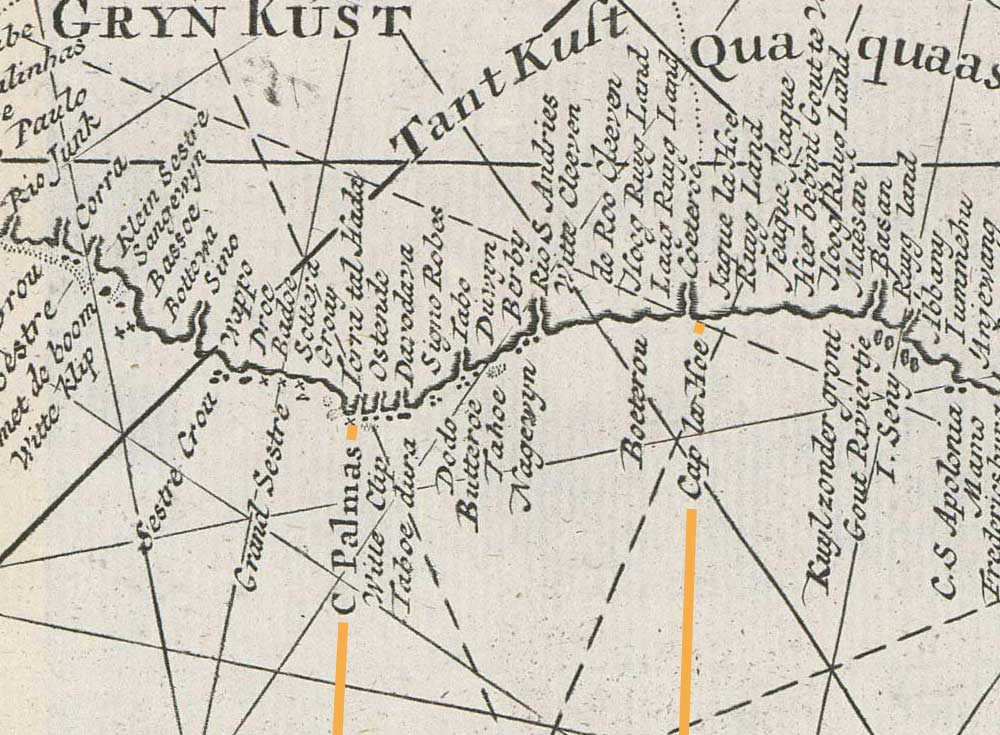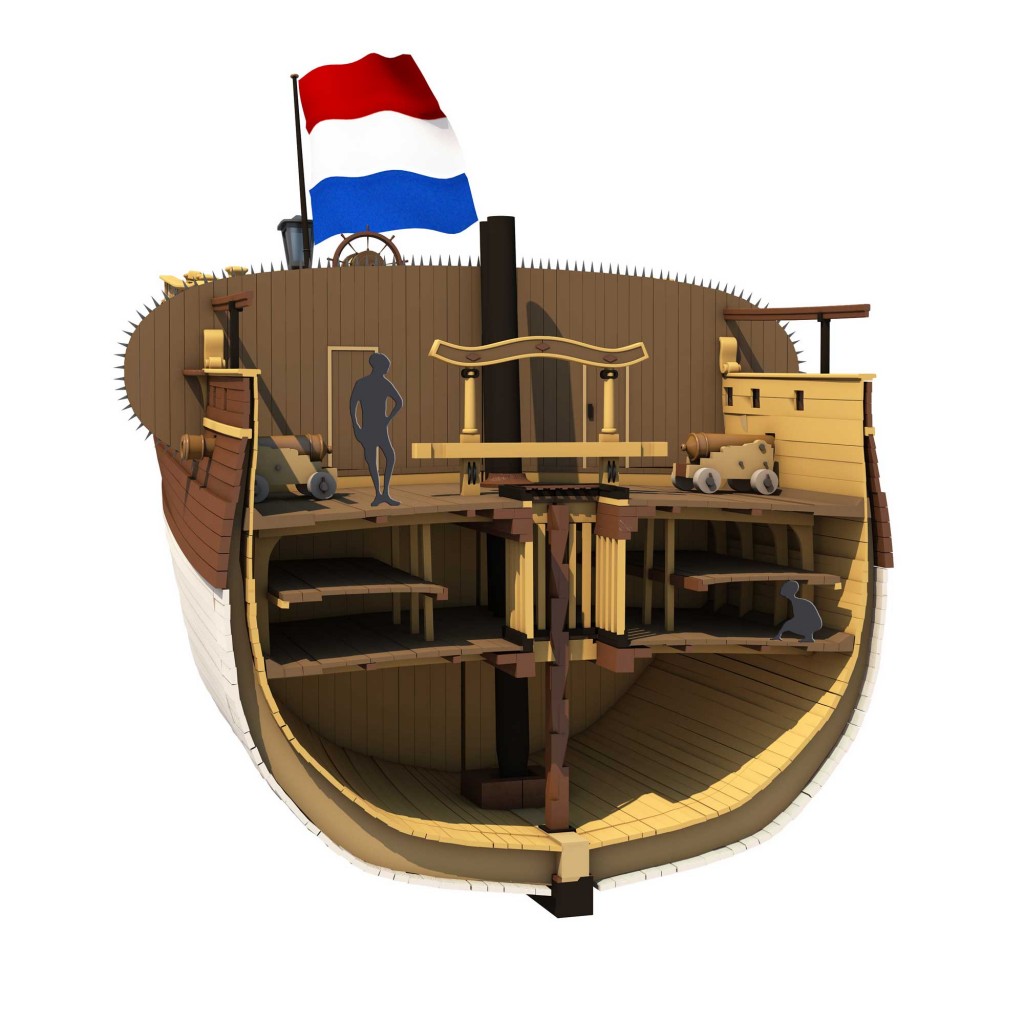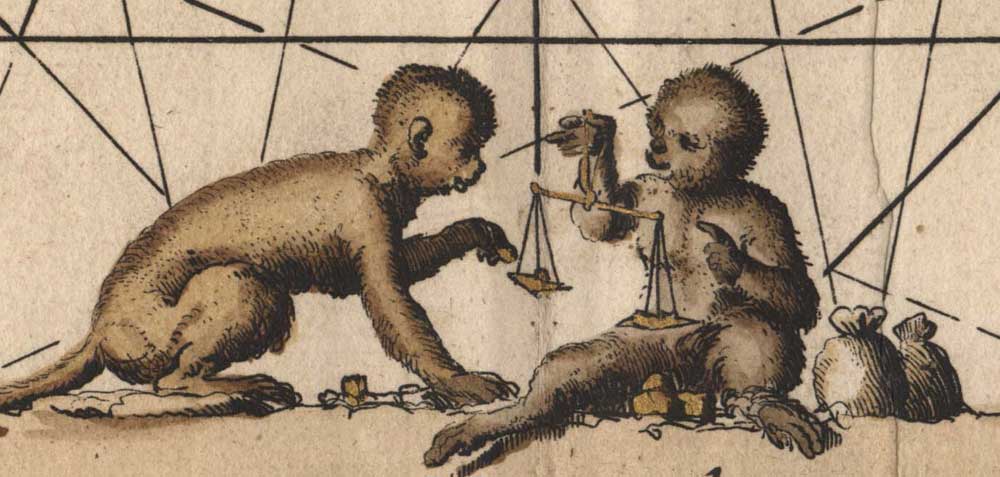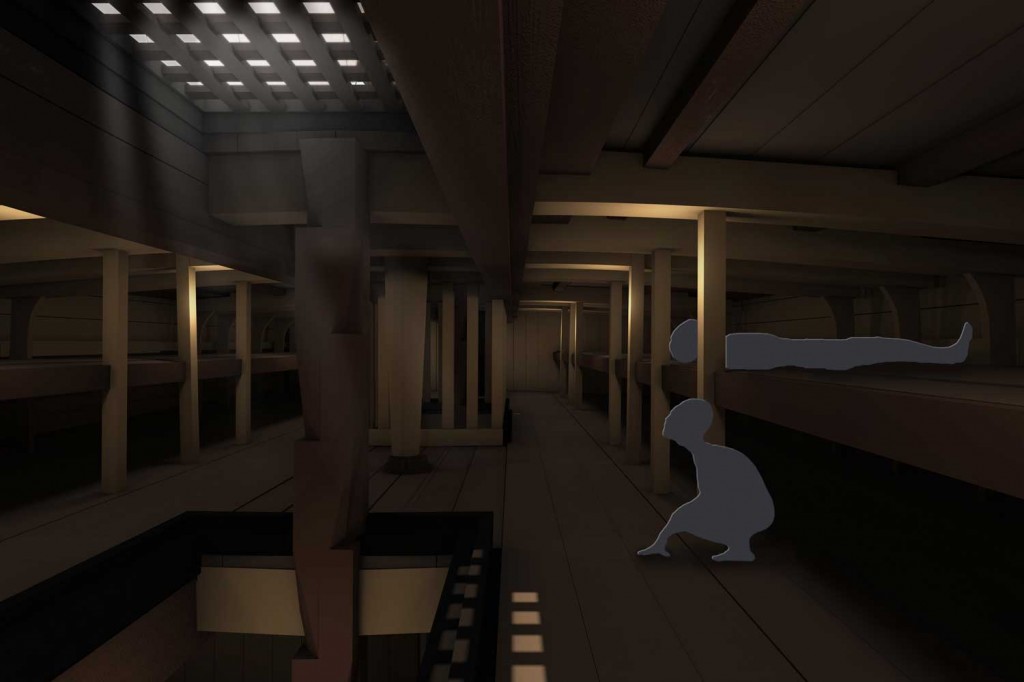After the Windward (or Grain) Coast, the instructions of the directors of the MCC dictate The Unity to sail down the coast until Cape Lahou, now known as Grand-Lahou in modern-day Ivory Coast.
Cape Lahou
The purchase of enslaved Africans progressed slowly. Especially along the Windward Coast the crew was only able to purchase a few persons a day – with a total of 58 people. These included 7 men, 22 women with 4 small children, 19 boys and 10 girls.
Towards the end of January the second stage of the voyage along the coast began. On reaching Grand-Lahou (Cape Lahoe) in Ivory Coast the nature of the trade changed drastically, as enslaved Africans were bought by the dozens. The ship remained anchored at Cape Lahou for quite some time, from February 9 till the 22nd of 1762.
Building the Bunks
Apparently the captain was aware of the increase in trade, because the day before the ship’s arrival at Cape Lahou he ordered the crew to put together bunks on the ‘tween deck. These bunks created extra sleeping areas for the prisoners.
The first bunks were built on the starboard side of the ‘tween deck, below the waist deck where the African men were held, on February 8, 1762. A few days later, on February 12 and 14, the bunks for the African women were built on the aft tween deck and the quarterdeck, and finally, on February 17, the last bunks were added for the African men.
The bunks formed the final modifications made to the ship to ensure its ability to carry a large number of prisoners. Others which had already been implemented included the partition, the latrines and the galley for the enslaved people.
Other Ships
The Jacob Maria, a snow ship from Vlissingen, captained by David Sylonimi was already moored at Cape Lahou when the Unity arrived there. Captain Menkenveld fired five shots in greeting. A week later he did that again, when the slave ship The Guinean Friends, captained by Mejier, arrived from Amsterdam.
Cargo of a Sailor
The officers and surgeon of The Unity were not allowed to trade for personal profit. They did however, receive a premium for each African sold in the Caribbean. The lower ranks of the crew were allowed to trade privately, though the amount of goods they could take was limited, as can be read in the working conditions terms. The limit depended on rank. A sailor was allowed to take 75 guilders worth of goods, including a maximum of one chest of bottles of liquor, or two halve anchors (including personal consumption).
We know the goods taken by one sailor on board The Unity: Maarten Capper from Flushing. He drowned on February 16, 1762 at Grand-Lahou (Cape Lahou) in Ivory Coast, while he was out trading with the boat with some other crew members, perhaps even trying to sell his own goods. On his death, his trading stock still included pieces of textile and kettles. His private possessions include a gold scale with gold weights, which he would have needed to conduct business at Cape Lahou: gold was used as currency there. They also consisted of clothing, shoes, boots, a cap, two hammocks, knives and a Bible.
Both personal possessions and personal trading goods were auctioned off among the crew members. The goods fetched more than 90 guilders, roughly 960 dollars. The personal possessions added up to 54 guilders; Maarten had also lend out money to his fellow crew. Altogether the personal possessions fetched 150 guilders, roughly 1590 dollars in modern terms.
Africans on Board
In this second stage of the voyage, from January 23 till February 22 1762, 216 Africans were bought in total. This included 274 men, women, boys and girls, and 7 small children, all of whom were held on board The Unity. In the evening and at night they were locked inside on the ‘tween deck of the 75 foot long and 23 feet wide ship. The people who had been bought along the Windward Coast had been imprisoned for one-and-a-half months by now. So far though, no prisoners had died yet.

The ship the Unity at the Ivory Coast
Between the orange markers: the destinations of the Unity at the Ivory or Tusk Coast. Detail from a West Indian sea chart, around 1728. Zeeland Archives, Collection Image and Sound, inv.nr 636.

Cross-section of the ship showing bunks on the ‘tween deck. The height of the deck was 1.4 meters (4 ½ feet); the height of the bunks, which were placed halfway between floor and ceiling, was half that height.

Monkeys with a gold scale and weights
Detail from a cartouche of a chart of Guinea. Zeeland Archives, Collection Image and Sound, inv.nr 592. At Cape Lahou and further down the Gold Coast the currency was gold.



